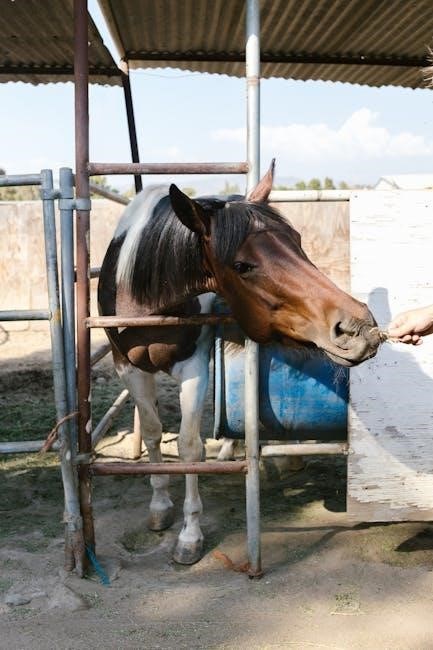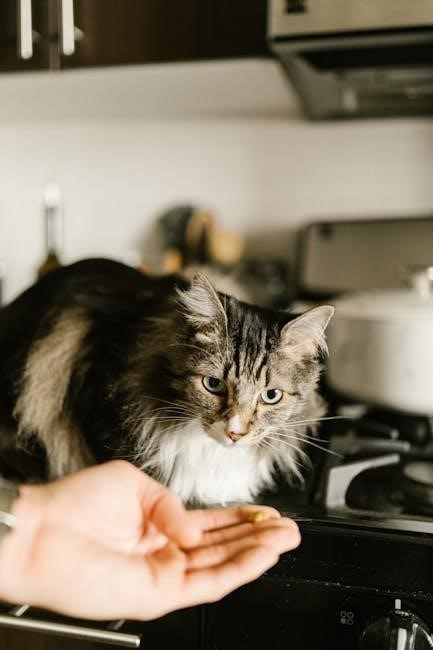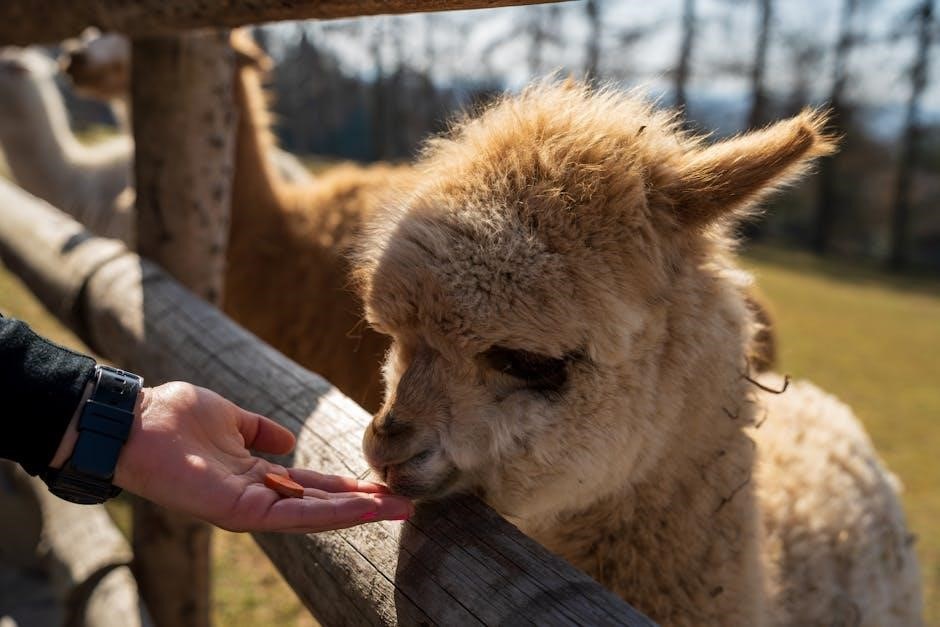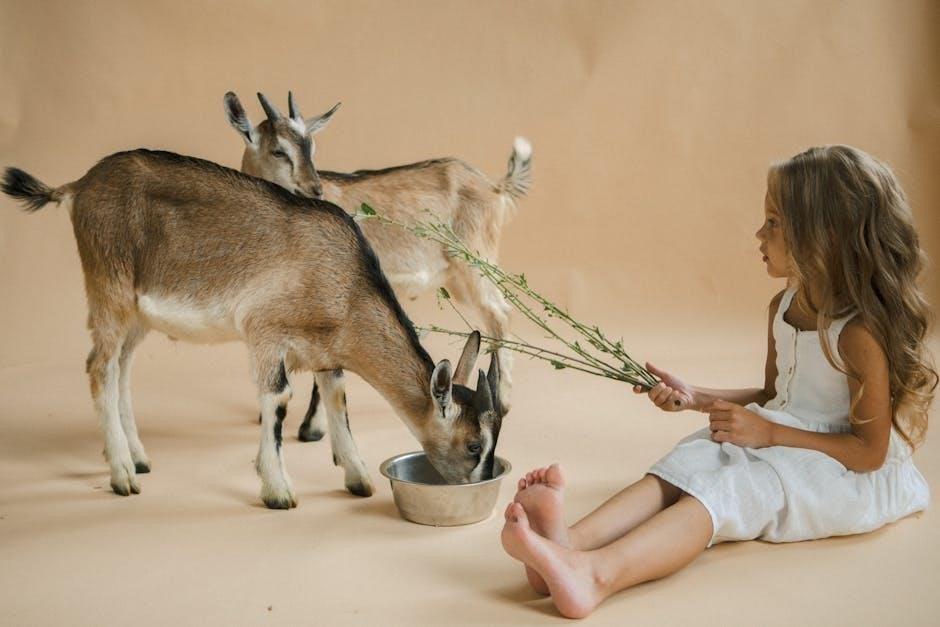Many pet owners are switching to raw feeding for their pets due to concerns about processed food ingredients and seeking a more natural diet option for their pets overall health and wellbeing naturally.
Benefits of Switching to Raw Diet
Switching to a raw diet can have numerous benefits for pets, including improved overall health and wellbeing. One of the most notable benefits is the reduction in stool size and odor, making it a more pleasant experience for pet owners. Raw fed pets also tend to have more energy and a healthier coat. Additionally, raw diets can help to reduce the risk of certain health problems, such as allergies and digestive issues. Many pet owners have reported a significant improvement in their pet’s health and happiness after making the switch to a raw diet. The use of natural ingredients and avoidance of processed foods can also help to reduce the risk of chronic diseases. Overall, switching to a raw diet can be a great way to improve the health and wellbeing of pets, and can be a rewarding experience for pet owners. With the right guidance and support, making the switch to a raw diet can be a smooth and successful transition.

Understanding Raw Feeding
Raw feeding involves providing pets with unprocessed foods, such as meats and organs, to promote natural health and wellbeing naturally every day.
Importance of Natural Ingredients
Natural ingredients play a crucial role in raw feeding, providing pets with essential nutrients and promoting overall health and wellbeing. The use of human-grade meat and organs in raw diets ensures that pets receive the nutrients they need to thrive. Many pet owners are concerned about the ingredients used in processed pet foods, which can include artificial preservatives and additives. In contrast, natural ingredients used in raw feeding are free from these additives, reducing the risk of adverse reactions and promoting a healthier digestive system. A raw diet rich in natural ingredients can help to support a pet’s immune system, reduce inflammation, and promote healthy skin and coat. By choosing natural ingredients, pet owners can provide their pets with a diet that is closer to their natural diet, promoting overall health and wellbeing. This approach to pet nutrition is becoming increasingly popular as pet owners seek a more natural and healthy diet for their pets.

Types of Raw Diets
Raw diets include various types such as prey model and frankenprey diets offering flexibility naturally.
Human-Grade Meat and Organs
Human-grade meat and organs are used in raw feeding, providing essential nutrients for pets.
These ingredients are sourced from premium suppliers, ensuring high-quality and safety standards are met.
The use of human-grade meat and organs in raw feeding helps to mimic the natural diet of pets, promoting overall health and wellbeing.
Multiple meats and organs are often used in raw feeding recipes, offering a varied and balanced diet for pets.
This approach helps to reduce the risk of nutritional deficiencies and promotes optimal health for pets.
By using human-grade ingredients, pet owners can have confidence in the quality of their pet’s diet, knowing that they are providing the best possible nutrition for their pets.
The inclusion of organs in raw feeding recipes provides essential vitamins and minerals, supporting the overall health and wellbeing of pets.
Overall, the use of human-grade meat and organs in raw feeding is a key component of a healthy and balanced diet for pets.

Adjusting to Raw Feeding
Pets adjust easily to raw feeding with proper guidance and support naturally every day.
Guidelines for Feeding Quantities
To determine the right feeding quantities for pets, it’s essential to consider their individual needs and activity levels. The amount of daily exercise and activity a pet engages in plays a significant role in determining their feeding quantities. For instance, a working dog that is active for most of the day will require more food than a pet dog that spends most of its time indoors. Pet owners should also take into account their pet’s age, size, and breed when determining feeding quantities. A general guideline is to feed pets 2-3% of their body weight in raw food per day, but this can vary depending on the individual pet’s needs. It’s also important to monitor a pet’s weight and adjust their feeding quantities accordingly to ensure they are receiving the right amount of nutrients. By following these guidelines, pet owners can ensure their pets are receiving the nutrients they need to thrive on a raw diet.
The Ultimate Raw Feeding Guide
The guide provides a simple step-by-step approach for beginners to raw feeding with easy navigation and clear instructions always available online for pet owners to access easily.
Step-by-Step Guide for Beginners
A step-by-step guide for beginners is essential to ensure a smooth transition to raw feeding, the guide should include information on the different types of raw diets available and how to choose the best one for your pet. It should also provide tips on how to handle and store raw food safely, as well as how to gradually introduce raw food into your pet’s diet. Additionally, the guide should offer advice on how to monitor your pet’s health and adjust their diet accordingly. With a clear and easy-to-follow guide, beginners can confidently start their pets on a raw feeding journey. The guide should be well-structured and easy to navigate, with clear instructions and helpful tips. By following the guide, pet owners can ensure their pets receive the nutritional benefits of raw feeding. The guide is a valuable resource for anyone looking to switch their pets to a raw diet.

